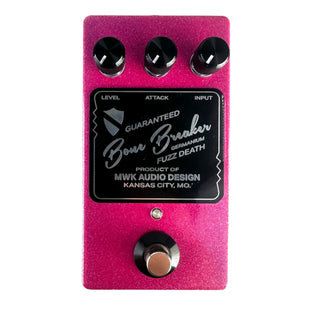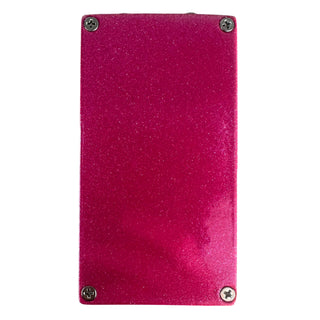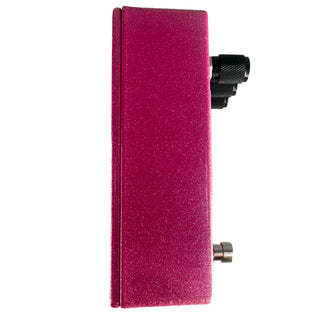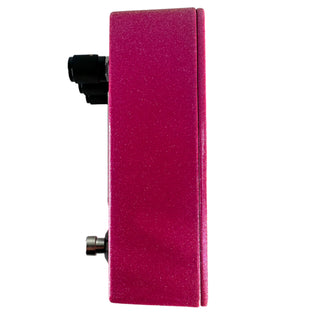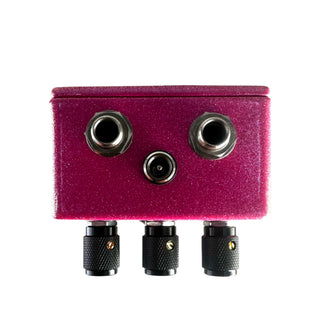Michael Klein Audio Design Bone Breaker Germanium Fuzz
- Unit price
- / per
Our gear experts are always happy to help you find the best gear for you and answer any questions.
All instruments are thoroughly inspected by our professional technicians before shipment.
Your details are protected and safe with us.
Michael Klein Audio Design Bone Breaker Germanium Fuzz
- Unit price
- / per
From Michael Klein:
About 6 years ago, I fell in love with the capabilities of the Tone Bender MkI circuit. It has very different performance and sound than the more famous MkII and MkIII. It’s nasty, aggressive, and holds up for heavy playing than traditional germanium fuzzes.
I’ve been dialing things in since, which has resulted in Bone Breaker. It’s an all-germanium design using a similar backbone to the original circuit. Comparatively, this is heavier (surprise surprise) and more articulate and useable. Less overblown fuzz, more holy shit that sounds good. Into a cleanish amp...it’s a blast to play. While traditionally known as a fuzz, I find this rides the line between fuzz and distortion with the breath and character only germanium transistors can offer.
Each uses individually measured and audio-tested transistors. The power section allows for standard 9V operation, and some cool Nichicon audio-grade electrolytics kept the sonic performance like a healthy battery without the bullshit hassle.
About Germanium Transistors...
Bone Breaker, like the original Tone Bender MkI, uses 3 germanium transistors. If you aren’t aware, germanium transistors are most commonly associated with fuzz circuits from the late 1960s and early to mid-‘70s. In a practical sense, they are inconsistent, temperamental, and require time, knowledge, and experience to make a musical circuit. To make matters worse for modern guitarists, the lowest noise versions of these transistors require a positive ground – literally the opposite of essentially all currently manufactured guitar effects.
Every transistor must be measured by hand, then audio tested. The MkI design is notoriously particular about the gain and leakage of each device used. For me, this means I typically can get 1 out of 20 tested transistors for the first stage, and about 1 out of 10 tested transistors for the second and third stages.
Like me, you’re probably wondering “if they’re such a pain in the ass, why use them?” The answer is hard to put into words, but the simplest answer is there is nothing like it. Germanium devices tend to be very expressive and dynamic, and in most circuits their clipping is incredibly warm and complex. With the right transistors in the right design, the result is absolutely worth the time and effort.
The nature of the beast
Like all germanium fuzzes, Bone Breaker will be highly interactive with your guitar, pickups, and amplifier. That also means that some pickup types, particularly EXTREMELY high output (or active) pickups may not achieve optimal results. While there is no right or wrong, I encourage you to experiment to see what you like best (and perhaps what you don’t like).
Some have called the MkI circuit as “spitty” or “gated”, and those are not inaccurate. Depending on the settings, you may find unusual transient characteristics. Fear not, this is the nature of the beast, and part of why so many (including me) find playing through germanium circuits so fun.
Playing dynamics are crucial, and I find myself picking quite lightly with Bone Breaker. With heavy picking, you’ll hear the fuzz and low end really explode, and you can hear the germanium sag and breathe as it struggles to rebias itself. If you find your guitar pushing Bone Breaker into these overblown realms, please do try turning down the INPUT control.
You will likely find the purest, most dynamic experience plugging directly into the Bone Breaker. In the least, try not to have any buffer circuits between your guitar and Bone Breaker.
Controls
LEVEL — LEVEL controls the volume of the Bone Breaker. Quite honestly, I like this control all the way up to help overdrive the front end of your amplifier. That being said, LEVEL’s interactivity with ATTACK in particular adds much versatility that is worth exploring.
ATTACK — ATTACK is a misleading name, but I decided to keep it in honor of the original MkI. Many players assume ATTACK is a sort of “fuzz” or “gain” control. This is quite wrong.
ATTACK is actually a bias control and sets the bias for the second transistor gain stage. At minimum, the pedal will be extremely gated and sputter. As you increase ATTACK, you’ll hear the sustain and harmonic character change.
Know that you might like different ATTACK settings for different guitars. If you find this control confusing, you can set this anywhere between 11:00 and 3:00 o’clock and be just fine.
INPUT — INPUT controls the strength of the signal hitting the circuit. I came up with this to help tame down extremely hot pickups, and help change the character from square-wave fuzz to more tube-like distortion.
At maximum, INPUT is out of the circuit. As INPUT is turned down, you’ll find the overall clipping to decrease, as well as a more controlled bottom end.
You’ll also notice background noise frequently increases as INPUT is turned down. While counterintuitive, this is completely normal.
Adding product to your cart
You may also like
Our gear experts are always happy to help you find the best gear for you and answer any questions.
All instruments are thoroughly inspected by our professional technicians before shipment.
Your details are protected and safe with us.


